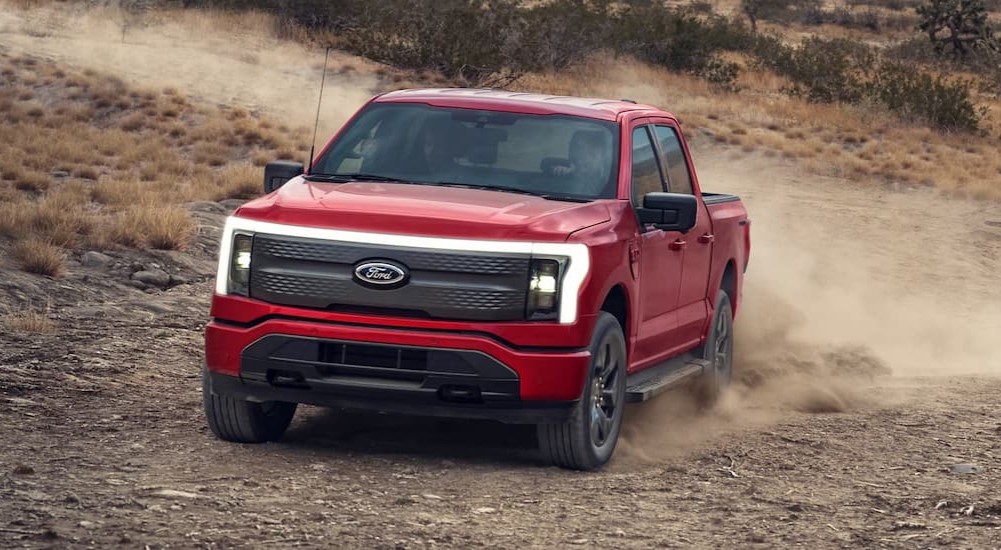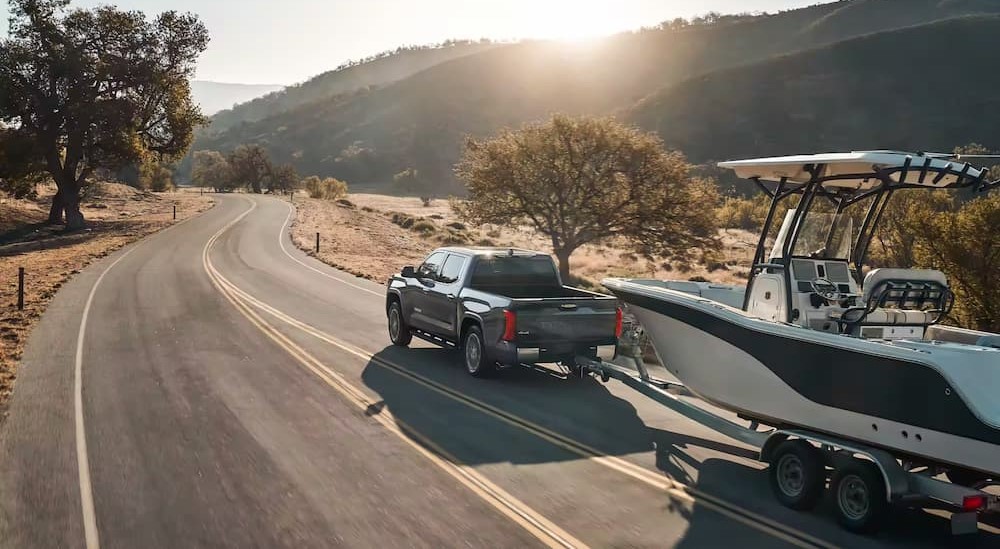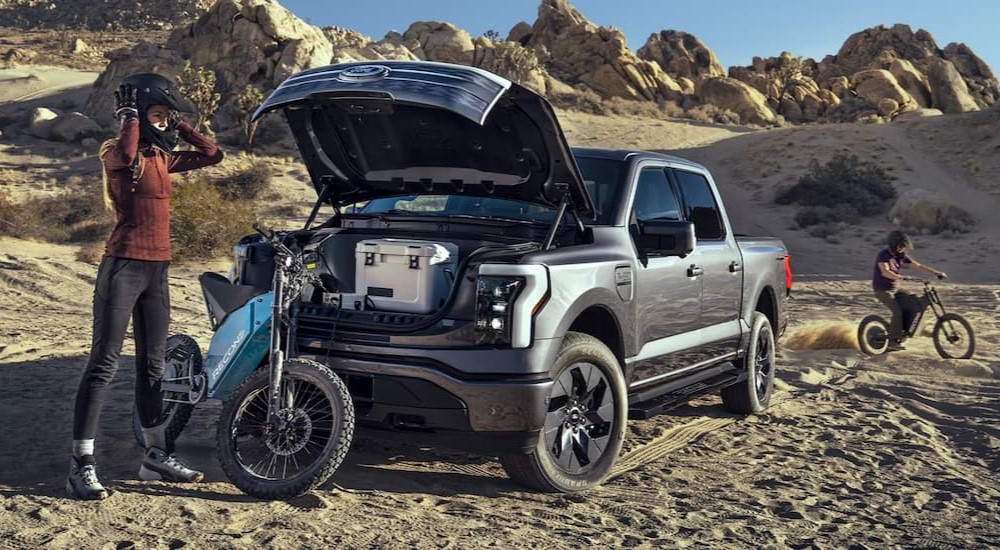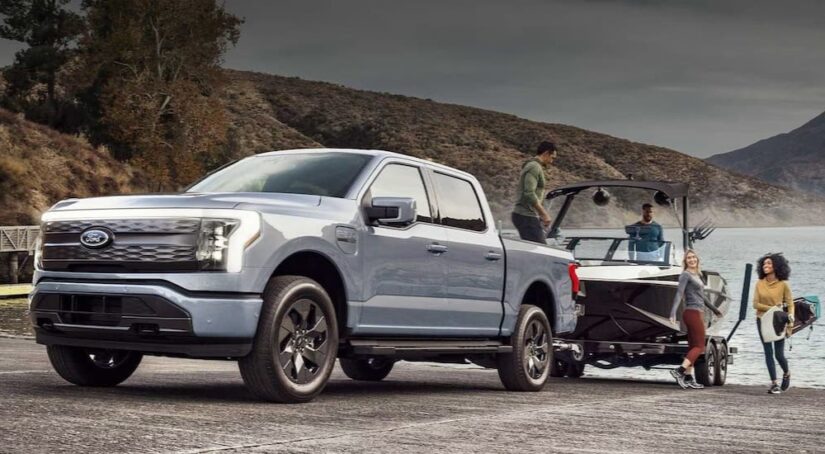Hybrid vehicles have been around for over two decades and have continued to be a growing presence in the automotive industry, reducing emissions and providing better fuel when compared to their strictly gas-fueled competition. Drivers are now more concerned with further stretching fuel in their gas tanks; however, these vehicles were once embraced exclusively by environmentalists concerned about climate change. That is probably why so many hybrids were compact sedans and SUVs. Still, it was almost a matter of time before the leading automakers started putting hybrid powertrains into different types of vehicles, such as full-size trucks. Two leading brands, Ford and Toyota, have fully embraced this movement with a lineup of notable vehicles, including trucks.
We see this when comparing the 2023 Ford F-150 vs 2023 Toyota Tundra. Both full-size trucks offer drivers an array of engine choices, including a hybrid option to boost fuel economy without inhibiting towing and hauling capability. The concern most drivers have is getting the performance they want without compromising on the key things they look for in a reliable truck. As a result, both of these hybrid full-size trucks address these concerns very well, but only one truly excels across the board.

A Closer Look at the Hybrid Engine Options
Ford and Toyota are both moving toward building clean energy vehicles, moving away from the overreliance on fossil fuels. With the 2023 Ford F-150 and 2023 Toyota Tundra, we now have options for drivers who want to reduce greenhouse gas emissions and their reliance on fuel. The hybrid powertrain option on the 2023 Ford F-150 is a 3.5-liter PowerBoost Hybrid V6 with a Hybrid Electronic 10-speed automatic transmission. This combines the V6 gas engine with a 35 kW permanent-magnet AC synchronous motor, which is powered by a 1.5-kWh lithium-ion battery pack. The engine has twin intercooled turbochargers with a dual overhead camshaft (DOHC) configuration, giving 24 valves for its six cylinders. It also uses a combination of port and direct fuel injection, giving the hybrid a combined output of 430 hp and 570 lb-ft of torque.
The 2023 Toyota Tundra also offers a hybrid powertrain option in the form of a 3.4-liter i-FORCE MAX Hybrid V6 with a 10-speed automatic transmission. It pairs this with a 36 kW AC motor powered by a 1.87-kWh nickel-metal hybrid battery pack, unlike most other hybrids that use a lithium-ion battery construction. Like the Ford hybrid, the V6 on the Toyota uses a combination of direct and port fuel injection with twin intercooled turbochargers. It also has a DOHC configuration with 24 valves for its six cylinders; however, it produces a slightly higher output of 437 hp and 583 lb-ft of torque.
Both of these engines are standard hybrids, meaning there is no plug-in option available to recharge the battery pack. Instead, these two models use a generator powered in part by the gas engine to keep the battery packs charged up. In addition, they both have regenerative brake recapture, which routes a portion of the kinetic energy released every time you step on the brakes to the battery pack.

The Availability of a Hybrid Engine on Each Model
Ford offers the 3.5-liter Hybrid V6 powertrain on every trim of the 2023 Ford F-150, except for the Raptor and Tremor. These two off-road specialists are available only with gas engines. In addition, the Limited trim comes standard with the hybrid engine option. Also, you can get the hybrid engine with either rear-wheel or four-wheel drive on the Ford. This means you don’t have to pay for a trim above the base XL model if you want to get the benefits of a hybrid on your F-150.
This is not the case with the 2023 Toyota Tundra, as the 3.4-liter i-FORCE MAX Hybrid is unavailable on the two lowest trims of the Tundra, the SR and SR5. If you want a hybrid on your Tundra, you will have to pay extra for a higher trim, such as the Limited, 1794 Edition, or Platinum. These three models are available with rear-wheel or four-wheel drive on the hybrid powertrain. Toyota also has made the hybrid powertrain standard on the TRD PRO and Capstone models, each of which is four-wheel drive only.
Do You Have a Need for Speed?
The hybrid powertrains on these two trucks make them surprisingly fast due to the availability of full torque at low RPM levels. We can see this with acceleration, as the Ford F-150 hybrid can go from 0 to 60 in a blazing 5.4 seconds, and the Toyota Tundra can cover the same distance in just 5.7 seconds. This power will help you merge your truck onto busy highways with ease. Both models have a top speed of 107 mph, which should be plenty of speed for long runs. The F-150 hybrid handles a little better than the Toyota Tundra Hybrid, as the Ford can complete the quarter mile in just 13.9 seconds at 101 mph; the Toyota needs 14.5 seconds to cover this distance at 92 mph.

Exceptional Fuel Economy
The 2023 Ford F-150 Hybrid is more fuel-efficient than the 2023 Toyota Tundra, with rear-wheel drive models getting an estimated 25 MPG in all driving conditions, while the four-wheel drive model averages 23 MPG. This is significantly better than the 22 MPG in combined fuel economy for the rear-wheel drive Tundra and the 20 combined MPG for the four-wheel drive model. The numbers for the 2023 Ford F-150 hybrid are, in fact, the best fuel economy numbers for any powertrain combination offered on this truck. So, if your heart is set on an F-150 and you want to save some gasoline, the hybrid powertrain may be the best way to go.
Hybrid Power Without Compromise
One of the biggest concerns for many truck drivers when looking at a hybrid is the fear of losing towing and hauling capacity. When it comes to the 2023 Ford F-150, it is true that the hybrid powertrain can’t compare to the capabilities of the available 5.0-liter “Coyote” V8 and the 3.5-liter EcoBoost Turbo V6. The Ford V8 can tow up to 13,000 lbs and haul up to 3,235 lbs, while the Turbo V6 model can tow an incredible 14,000 lbs while hauling an equally impressive 3,315 lbs. Still, the F-150 Hybrid is no slouch, with the capability of towing up to 12,7000 lbs, which is almost as much as the V8. It can also haul up to 2,120 lbs in its payload bed, another impressive number.
The 2023 Toyota Tundra hybrid doesn’t come close in either regard. Even though its engine has a higher output than the Ford F-150 hybrid, it can’t channel this into performance. The Tundra hybrid can only tow a maximum of 12,000 lbs while hauling only 1,940 lbs. That latter figure is less than the 2023 Ford F-150 with the base 3.3-liter V6 engine. So, if you are looking for capability, the 2023 Ford F-150 hybrid is your better bet.

Two Excellent Hybrids, but Only One Gives You Better Overall Performance
When choosing a truck, you want to ensure you get the best fuel economy, towing and hauling capability, and acceleration. This is especially important with a hybrid truck since you will generally pay more for the option of a hybrid powertrain. To make the purchase cost-effective, you have to see real savings in fuel economy. Regardless of whether you choose rear-wheel or four-wheel drive, you will get significantly better fuel economy on a 2023 Ford F-150 with a hybrid powertrain than on a 2023 Toyota Tundra.
In addition, the F-150 will give you better acceleration, towing, and hauling capabilities. Ford also gives you more models to choose from with the hybrid powertrain, making it available at a lower and more affordable trim level. So, if your goal is to cut down on your fuel consumption in your full-size truck without sacrificing performance, your better choice is a 2023 Ford F-150 hybrid.



